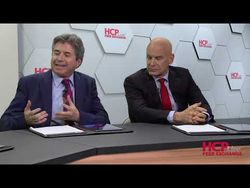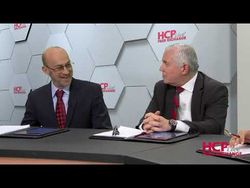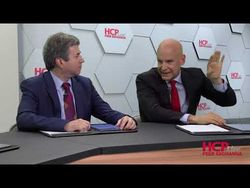Reducing Risk in Cardiovascular Events - Episode 7
Statins Therapy: Nonadherence and Younger Populations
Christie M. Ballantyne, MD: This is 1 area in which you do have to talk to the patient, which was your point, Mike. Before this program we were talking, 1 of the cardiologists in this panel mentioned, “I don’t want to take a medication.” Did you hear that? I think we heard that, didn’t we?
Deepak L. Bhatt, MD, MPH: Somebody did say that. I think someone wise and cautious. Yes, I did hear someone say that.
Christie M. Ballantyne, MD: That comes up not infrequently, and they actually see me because their primary care physician told them, “I want to start you on a statin.” And they say, “Well, let me go see what he says too,” and I say the same thing. They say, “But then I don’t want to take a medication.” So I think this is where a coronary calcium score for a 50-year-old man is going to come in, and we’ll say, “OK, listen, you’ve got already clearly atherosclerosis. You’ve got plaque.” Now, a caution. And this is the thing about the power of 0. The power of 0 is age and gender dependent.
Steven E. Nissen, MD: Yes, it is.
Christie M. Ballantyne, MD: This is a very important thing. If that’s a 35-year-old man and he has a 0 calcium score, that doesn’t mean much of anything. And if it’s a 35-year-old woman, she shouldn’t have gotten the test with it. It’s age dependent, so it is a useful test. But if you look at younger people, it’s very rare to have calcium. The data are that women around the age of 40 are around 2%. Does that mean 98% of women shouldn’t ever be treated? Or the same thing for men; it’s small. You have to be very cautious in terms of downgrading risk in a young person.
Steven E. Nissen, MD: Let me just mention 1 more thing, and that is that we get these patients of course too—a lot of them in our prevention clinic at Cleveland Clinic—who say, “I don’t want to take those terrible drugs, statins.” And I am at a stage in my career when I can take time with patients—not everybody can—and I will spend whatever amount of time I have to. I will actually give them the articles. I will walk them through them, and we will engage in what people sometimes called shared decision making, where I say, “Here are the facts.” I will be very blunt with them, that what they’re reading on the internet is nonsense. I can use stronger words than that if I want to, but we can’t because there’s a general audience here.
Deepak L. Bhatt, MD, MPH: Thank you for your restraint.
Steven E. Nissen, MD: I just don’t let up. I arrange to see them again in a month, and I keep with them, because coronary disease is a disease that’s preventive.
Michael Miller, MD: And it may take several visits to do that.
Steven E. Nissen, MD: It may take several visits. We have a skilled interventionalist here, Dr Bhatt, who can fix the coronary when they come in with their acute MI [myocardial infarction], but I want to put you out of business. I don’t want you ever to have to rush somebody to the cath [catheterization] lab with a big anterior wall MI. The way to do that is identify these people at risk, and I do not think the very conservative American guidelines are good enough. And I’ll be very blunt about that. I’ve felt this for a long time, that we can prevent this disease in a lot more people if we’re willing not to have it very fixed and arbitrary. Frankly, the risk calculators don’t even work very well. They’ve been shown to be inaccurate. So you’ve got to use common sense. You can’t be an automaton, that plugs everybody into an equation that determines what you’re going to do.
I have 1 question for everybody, because I’m getting a lot of these kids now referred to me. At what age are you comfortable starting a statin in patients with heterozygous FH [familial hypercholesterolemia]?
Michael Miller, MD: Seven or 8. Studies have shown that it doesn’t impair growth, which was 1 of the concerns at maturation. Once they’re identified as young as possible, we’d start.
James A. Underberg, MD, MS: We just had a wonderful article published recently showing that if you treat kids and compare them with their parents, they don’t fall off the curve the way their parents did with regard to cardiovascular events. Really wonderful data.
Steven E. Nissen, MD: For FH, I agree. But you also see these kids who have more of a polygenic.
Deepak L. Bhatt, MD, MPH: There are a lot more of those.
Michael Miller, MD: Much more common.
Steven E. Nissen, MD: Much more common. They’re not 220 mg/dL. But if you see a 10-year-old with an LDL of 170 mg/dL, that’s very ominous. What I’ve been doing with the more polygenic kids is waiting until they’re about 12 or 13, just when they’re hitting puberty. I can’t give you a good reason for that, but keep in mind that the safety data are very limited. It’s small.
Christie M. Ballantyne, MD: There is a reason, because what ends up happening is if they have FH, then we know that now. The puberty thing has changed a lot. There are people for whom you don’t get a really valid number until post puberty. It is important to start them while they’re at home. The worst thing you can do is start someone who’s going to college. We used to wait until later, and then of course there’s adherence. That’s a mistake to avoid.
Steven E. Nissen, MD: I have had very bad experiences with adolescents and medications. They go off to college and they come back and I get an LDL [low-density lipoprotein], and it’s not good. And I say, “Do you take your medicine?” “Yeah, I take my medicine.” “Do you really take your medicine?” “Well, occasionally I forget.” They’re going to parties, and there’s a little drinking. I heard that there actually is some drinking on college campuses. I’m shocked because we didn’t do that when I was in college. I hear that that’s going on. The reality is that you’ve got to get those kids through adulthood. And in FH, that makes me worry.
Michael Miller, MD: That’s a big deal.
James A. Underberg, MD, MS: We see that in a lot of our FH kids who then go off to college and then leave home and often discontinue care until they’ve kind of established a life and are working. That’s partly because they’ve been on medications for so long and are part of the family unit; they’re kind of spreading their wings, so to speak. They need to be pulled back in with regard to treatment and aggressive therapy if they have FH.
Transcript edited for clarity.



